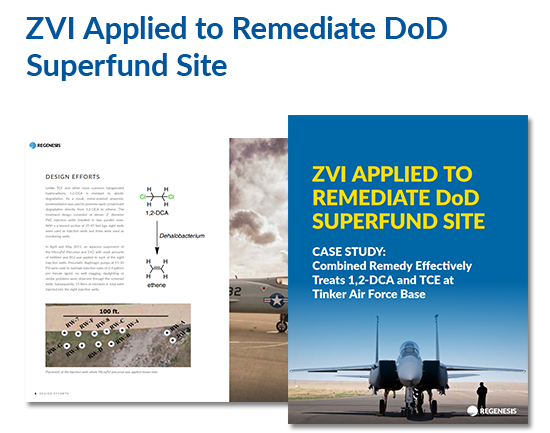This case study reviews the remediation of dichloroethane (1,2-DCA) and Trichloroethylene (TCE) using colloidal zero valent iron (ZVI) at Tinker Air Force Base, a major United States Air Force base located in Oklahoma City, Oklahoma.
Case study highlights:
- Successful application of colloidal zero valent iron through well system
- At 3 years post-injection, the presence of ethene signals active biodegradation
- Aqueous suspension of colloidal zero valent iron effectively reduced contaminant levels
- Remediation was successfully coordinated in the middle of an active Air Force base
This remediation project was undertaken near former Waste Pit 1 and addressed a co-mingled plume of 1,2-DCA with lesser amounts of TCE. The 1,2-DCA concentrations in the plume were as high as 500 mg/L. The remediation included an application of emulsified vegetable oil (EVO), an aqueous suspension of colloidal zero valent iron (MicroZVI Precursor), with small amounts of fertilizer and B12. Typically, zero valent iron cannot be applied through well systems. However, due to the small particle size of the zero valent iron, this application was successfully applied through the existing wells. At 3 years post-injection, the contaminant levels remain near zero with the presence of ethene indicating continuous biodegradation.


